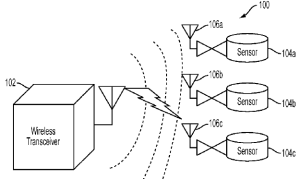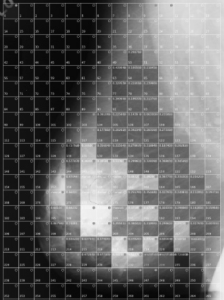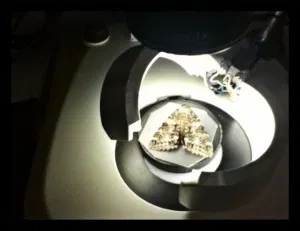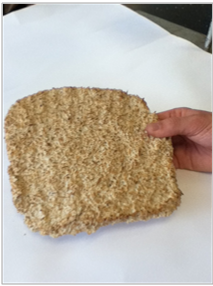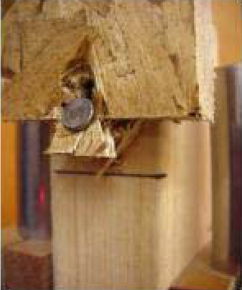Simple hardware modification eliminates passive RFID tag interference
Radio-frequency identification (RFID) systems transmit data wirelessly between a reader and a tag/sensor attached to an object. The purpose is to identify and track the object, and sometimes to collect and transmit information about the object’s environment.
The tag may either be “active”, having its own source of power, or “passive”, relying solely on the RF energy emitted by the reader to generate a response signal. Each system has advantages is certain applications. In general, passive tags are much smaller, cheaper and last longer. One the other hand, because all of the tags within a vicinity respond when the reader emits an interrogating signal, multiple tag signals interfere with one another and may be difficult for the reader to separate.
Detect Breast Abnormalities up to 5 Years Earlier
This computer-aided diagnostic tool is designed to not only provide early detection of breast tumors, but also to predict the likelihood of a malignancy to develop before the tumor appears. This could allow detection of an actual or possible malignancy 1-5 years earlier than by using current methods.
By analyzing extensive imaging data, researchers discovered that breast tissue fluctuations in regions surrounding tumors are organized differently depending on whether the tumor is benign v. malignant. Tissue surrounding benign tumors is similar to normal breast tissue, while the tissue in the microenvironment of malignant tumors is disrupted in way that this diagnostic tool characterizes quantitatively. The degree of disruption may be used to diagnose and predict malignancy in breast and potentially other tissues.
Novel system architecture results in 33.9% increase in computer system performance
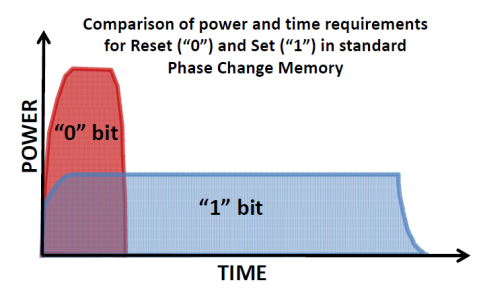 It is predicted that by 2018 computers will be capable of a billion billion calculations per second. That means they will require 1000 times more memory than is available today. One essential type of memory, DRAM, is reaching its performance limit for energy efficiency and transistor scaling.
It is predicted that by 2018 computers will be capable of a billion billion calculations per second. That means they will require 1000 times more memory than is available today. One essential type of memory, DRAM, is reaching its performance limit for energy efficiency and transistor scaling.
Phase Change Memory (PCM) is a leading contender to replace DRAM. It outperforms in both power usage and scalability and, unlike DRAM, PCM stores data permanently instead of losing it if the power goes out. This is similar to other permanent memory devices, like the familiar flash drive, but PCM is more reliable and over 100 times faster than flash.
However, PCM has a major weakness: slow data write speed. This is due to characteristics of the chip material that cause writing a “1” data bit to be slower than writing a “0” bit. So the speed of writing a bit sequence is always limited by the ones present. The chip also requires more electrical current to write a zero than a one. As a result, the zeros present limit the number of PCM cells that can be written concurrently. Read More…
Gorham Lamp provides cool, fully adjustable light for magnification and photography
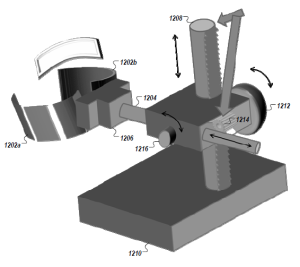 This multi-purpose studio and microscope light adds flexible functionality far superior to the standard ring light. The unique design provides adjustable annular and semi-annular illumination for bright-field, dark-field, transmitted, and other oblique lighting applications.
This multi-purpose studio and microscope light adds flexible functionality far superior to the standard ring light. The unique design provides adjustable annular and semi-annular illumination for bright-field, dark-field, transmitted, and other oblique lighting applications.
The combination of lighting options possible with this product is particularly useful for observation of small objects where fine control of light direction, intensity, and distribution directly impacts observable surface features and object translucence.
This technology is available for licensing and a limited production run of commercial units is underway. Contact us if you are a microscopist, entomologist, archeologist, curator, or photographer interested in participating in testing this new product in your laboratory.
Contact: Joe Staples at [email protected]
US Patent 14/335,730 pending
Wave Rider – a low-maintanence off-shore wind resource assessment buoy
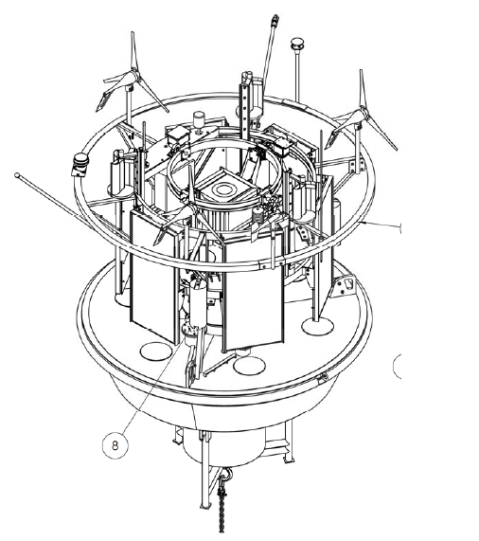 This buoy system has the capability of conducting long-term offshore wind resource assessment campaigns with limited maintenance. Read More…
This buoy system has the capability of conducting long-term offshore wind resource assessment campaigns with limited maintenance. Read More…
Then only paint matching phone app calibrated to ambient light
There are a number of smartphone apps that are designed to help consumers match colors of existing paint or furnishings to paint swatches. However, none of the existing tools take into account the differences in lighting between the home and the store. Colors can look quite different under different lighting, resulting in a surprise for painters and product returns to the paint counter.
To use the app, the user calibrates a digital phone camera against a gray control card provided at the paint counter. The user then takes a photo, in their home, of the paint or furnishings to match. The calibration accounts for the variation in lighting between home and the store, allowing an exact match of paint or fabric to be selected according to the way it will appear in the home.
The app was first developed as a tool to measure reflectivity of snow or water for scientists studying climate. Some minor modifications are required for use in paint matching. The code will be made available to a developer with the resources to commercialize.
Related App: Hydrocolor
Analyze Samples in the Classroom, Lab or Field with this Portable Fluorescence Spectrometer
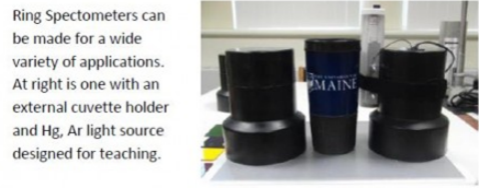
Custom software and the patented curved reflective surface in this spectrometer reduce instrument size and focus light so well that inexpensive LEDs replace expensive light sources.
This portable, durable, inexpensive florescence spectrometer has a variety of potential applications, including the following:
- Secondary education, where important STEM topics may not be adequately addressed because spectroscopy instruments are too expensive to purchase and maintain.
- Field research in which technicians are required to transport water or soil samples to a lab for spectroscopy analysis, adding time and complication .
- Remote sensor applications where data collection may be limited due to spectrometer power and durability limitations.
Synthesis of Bacterial Cellulose in Low-cost Culture Medium Using Hot Water Extracted Wood Sugars
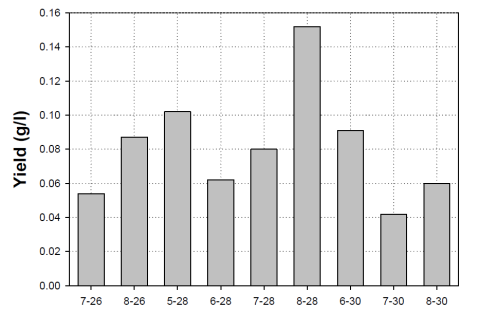
Figure: Bacterial yield in hot water wood extract after 28 days of cultivation at pH (first number) and temp (second number).
Cellulose is well known as one of the most abundant biodegradable materials in nature and has received considerable interest in both academic and industrial fields. Cellulose synthesized by bacteria is of particular interest over plant cellulose for some applications due to its unique structural and mechanical properties and high purity.
Some high value applications for bacterial cellulose include biomedical applications (scaffold for tissue engineering, wound dressing materials, artificial skin), and production of membranes for high tech applications, such as diaphragms for loudspeakers.
Problem: Bacterial cellulose is currently expensive to produce and purchase however, due to the expense of the media.
Solution: Use inexpensive hot water extracted wood sugars for bacterial cellulose production.
25% Stronger, 100% Biobased Fiber Board
By replacing commonly used formaldehyde-based resins with a new type of binder, researchers at UMaine have developed fiber board building material that is nontoxic, made entirely from renewable materials and is 25% stronger than currently available products. The new binder includes cellulose nanofibrils (CNF), which are wood fibers about 200 micrometers in length and 30 nanometers wide. The CNF is manufactured using a UMaine proprietary mechanical process that is free from harmful chemicals or additives.
Benefits:
- Reduction in health problems and related expenses (up to $48m per year 1) caused by formaldehyde exposure.
- Up to 25% increased product strength.
- All components, precursors and processing materials are renewable and nontoxic.
Reinforcement system increases wall panel strength by 20%
When stressed, oriented strand board (OSB) panels tend to fail along the edges and at nail sites, particularly if the panel has gotten wet. This technology presents a system for waterproofing and reinforcing panel edges. The reinforced edge improves fastener performance and reduces the edge swell and weakening caused by moisture exposure. Reinforced edges strengthen the panel by up to 20%.
UMaine Reference: 2005-07
Patents:
(US 6,699,575 issued Mar 2, 2004)
US 7,547,470 issued Jun 16, 2009
Inventors: Douglas J. Gardner, Stephen M. Shaler, Lech Muszynski, Ciprian Pirvu, Jungil Son

